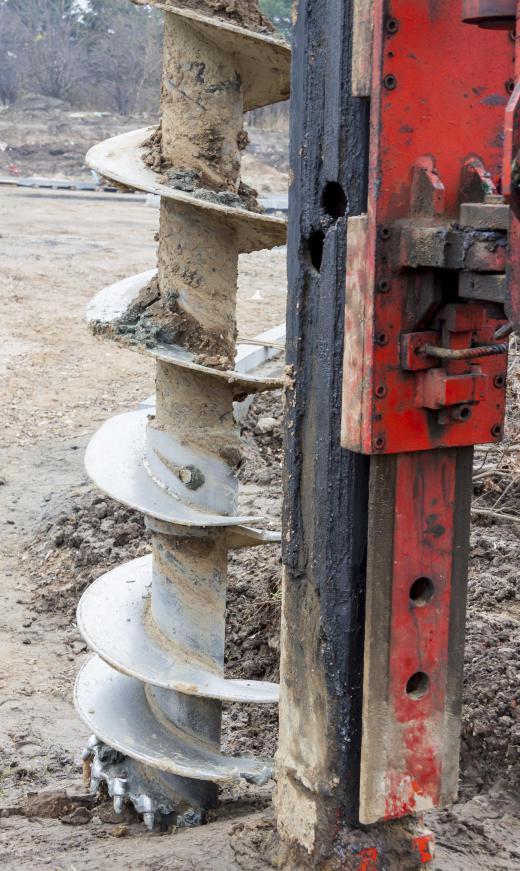A feed screw is a component of certain types of industrial machinery that is designed to move, or feed, materials through a tube. Typically, a feed screw is a metal cylinder with an incline plane wound around its outside, resembling a long screw or auger. The feed screw is then placed in a tube wherein various materials flow from a hopper or chute. As the material from the hopper flows into the tube, the feed screw rotates, pushing the material along the length of the tube to where it will be used. Feed screws are commonly used in the plastics and food production industries to move, mix and extrude product.
In the plastics industry, feed screws are the hearts of the extruders used in blow molding, injection molding, sheet extrusion and profile extrusion. In these cases, the tube that surrounds the screw is heated to the point that it will melt the plastic resin. As the screw moves the material down the tube, called a barrel, the material is melted and mixed together. At some point along the screw, the pitch of the threads change, allowing less space for the material to flow and causing the material to build up pressure. Once the material reaches the end of the screw, it is extruded either through a die, forming the melted plastic resin into the desired shape or profile, or into a mold where it is cooled into the desired shape.

In the food industry, feed screws are used essentially the same as in the plastics industry. The primary difference is that instead of melting the material, the food is cooked as it passes along the feed screw and formed into the desired shape at the end. Instead of applying direct heat, some types of food processing equipment use the feed screw to build up pressure, which generates the heat needed to cook the food product.
Feed screws are not only useful to extrude products. They are also used frequently in many industries to mix various raw materials into a final product. In this type of application, a number of feed screws will be collected into an array wherein each screw feeds a separate ingredient into a hopper, bin or other container. As each screw feeds material into the container at a specific rate, very accurate and different amounts of material can be dispensed as desired. For example, if three equal-size screws are arrayed and one screw turns at 5 revolutions per minute (rpm), the next at 20 rpm and the final screw at 25 rpm, the final composite will consist of 10% of the first material, 40% of the second and 50% of the third.
